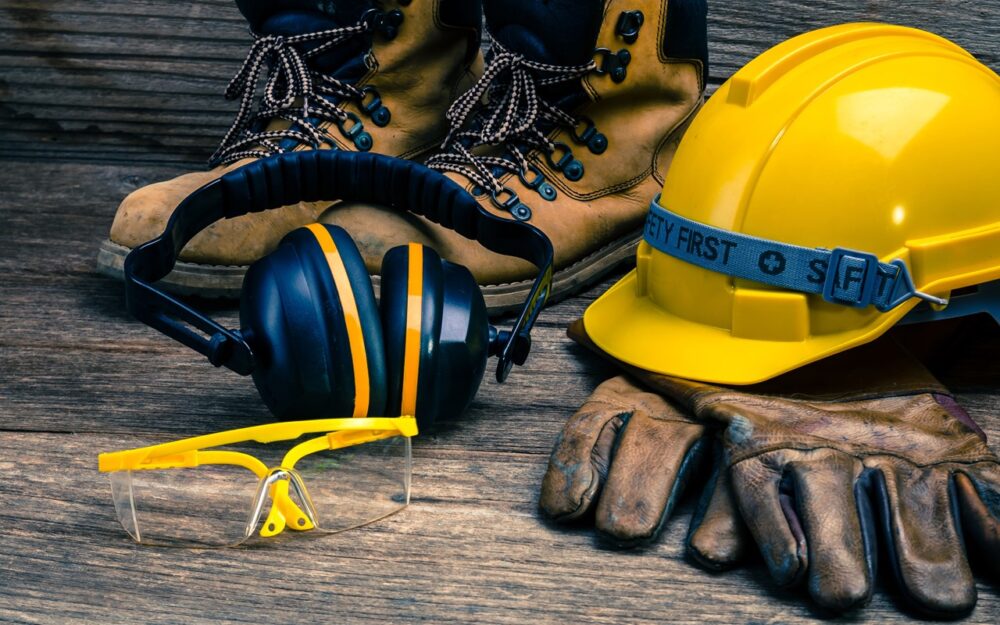Contractors care about their employees’ safety for a lot of reasons. They work closely with a small number of employees and often become as close as family.
Beyond their relationship with their employees, contractors know that It’s expensive to lose employees to injuries. They must pay extra costs for workers’ comp claims, and there’s a high price tag for training new workers.
Workplace safety is essential, and most accidents are preventable. In 2020, according to the National Safety Council, workplace injuries will cost businesses about $164 billion. That’s about $1,100 per employee each year.
Sixty-five million days of work were lost due to injuries in 2020, too, which calculates into even more losses for businesses.
When you operate on slim profit margins like many small businesses, the savings you get from having a safe workplace can make a big difference. Here are ten ideas to make your workplace safer:
1. Promote Safety

Source: impactsafetyinc.com
The person in charge sets the tone for workplace safety. If you want your workplace to be safer, you need to make it a priority by promoting it.
Use “Days Without an Accident or Injury” signs and have rewards every few months that you can go without an injury.
The more you talk about safety and create plans for a safe workplace, the more you promote it.
2. Worker’s Compensation Insurance
No matter how careful you are, accidents and injuries happen. Prepare for their eventuality by having worker’s compensation insurance policies in place.
Worker’s comp is required in most states when you have employees. There are severe fines and penalties for not carrying worker’s compensation insurance.
A worker’s compensation policy can cost less than you think. Save even more when you bundle your policy with other types of insurance, such as liability, error and omissions, and commercial auto policies.
It’s easy to get a worker’s comp policy. Find a company that makes it easy to obtain insurance certificates and file claims without making a phone call. Learn more online about your coverage requirements and options.
3. Train Employees in Safety Procedures

Source: mybites.io
Different contracts require some kind of training, whether it’s safety or hazardous materials training. Getting your work crew the necessary training will help prevent accidents and injuries. It can even save lives.
Training is an added expense, but you can calculate how much it pays to be safe to see how training will offset those costs.
4. Use Safety Signs and Hazardous Material Sheets
Safety signs can alert workers to dangerous conditions and remind them to be safe.
Whether the signs you use are mandatory or help communicate emergency information, use standard symbols in your safety signage.
Safety signs and symbols and their meanings are universal. Using these will help all your workers to be aware of the risks they face on the job.
Using the Material Safety Data Sheets for all hazardous materials is a requirement. It keeps your team safe.
5. Personal Protective Equipment

Source: hseblog.com
Most contractors require workers to use at least some personal protective equipment (PPE). However, if you want your workplace to be safe, you may need to become more of a stickler about PPE usage.
As the leader of your company, set a good example by wearing PPE, and then make sure that your employees use it, too.
6. Keep the Work Area Clean
Keeping the work area clear of debris during working hours can drastically reduce the number of accidents on your job site.
Clean spills immediately, and don’t let boxes, construction waste, or other clutter build up. It can be a tripping hazard, and tools can get lost in the chaos.
7. Use Tools and Equipment Safely

Source: ipleaders.in
Use tools properly to promote safety. Workers should store tools and equipment properly and inspect them regularly to ensure they are in proper working order.
8. Stretching, Resting and Taking Breaks
It isn’t safe to work continuously without breaks. People need to take a minute to eat, clear their heads, and re-focus.
Depending on the type of work, breaks are critical to safety. The more intense the work is, the more breaks people need. Regular intervals of time away from work also increase productivity.
9. Plan for Emergencies

Source: onsolve.com
Emergencies can happen anytime, so it makes sense to plan for them. Having an emergency response plan (ERP) takes the pressure off when an emergency does occur.
Communicate your ERP with your team at least once a year. That way, at least they are familiar with the basics and know where to find the ERP when an emergency happens. It doesn’t take long to go over your ERP with your employees.
10. Make Safety Reporting a Priority
One of the reasons that workplace safety issues don’t get adequately addressed is that they don’t get reported. If you let your employees know that you are open to hearing about their safety concerns, they are more likely to report safety issues.
You can also appoint a safety manager or a safety captain. Another idea is to create a safety team and have them make weekly or monthly inspections of the job site and then report back to you.
Your safety team should be responsible for ensuring that everyone follows safety procedures. They should also check safety equipment, like MSDS, fire extinguishers, and first aid kits.
Every Contractor Needs to Pay Attention to Workplace Safety
Safety issues affect every workplace, but of all the workplace injuries that can happen, they are mostly preventable.
Implementing a workplace safety program can reduce the number of accidents and injuries in the workplace. In addition, by creating a culture for workplace safety, contractors set a tone and make their job sites safer, more productive, and more profitable.














